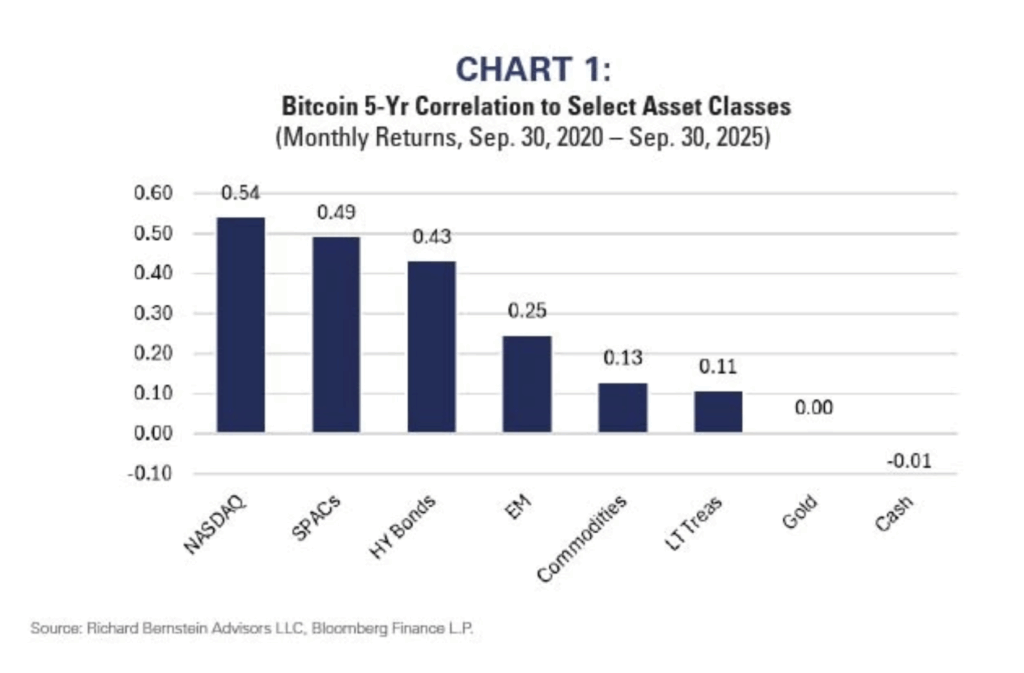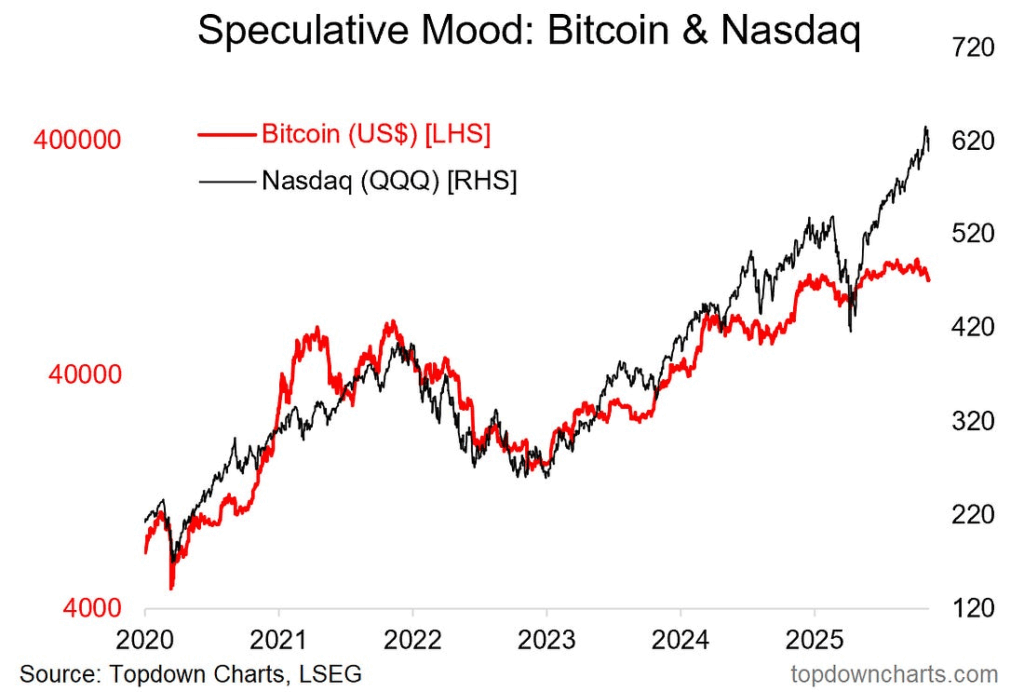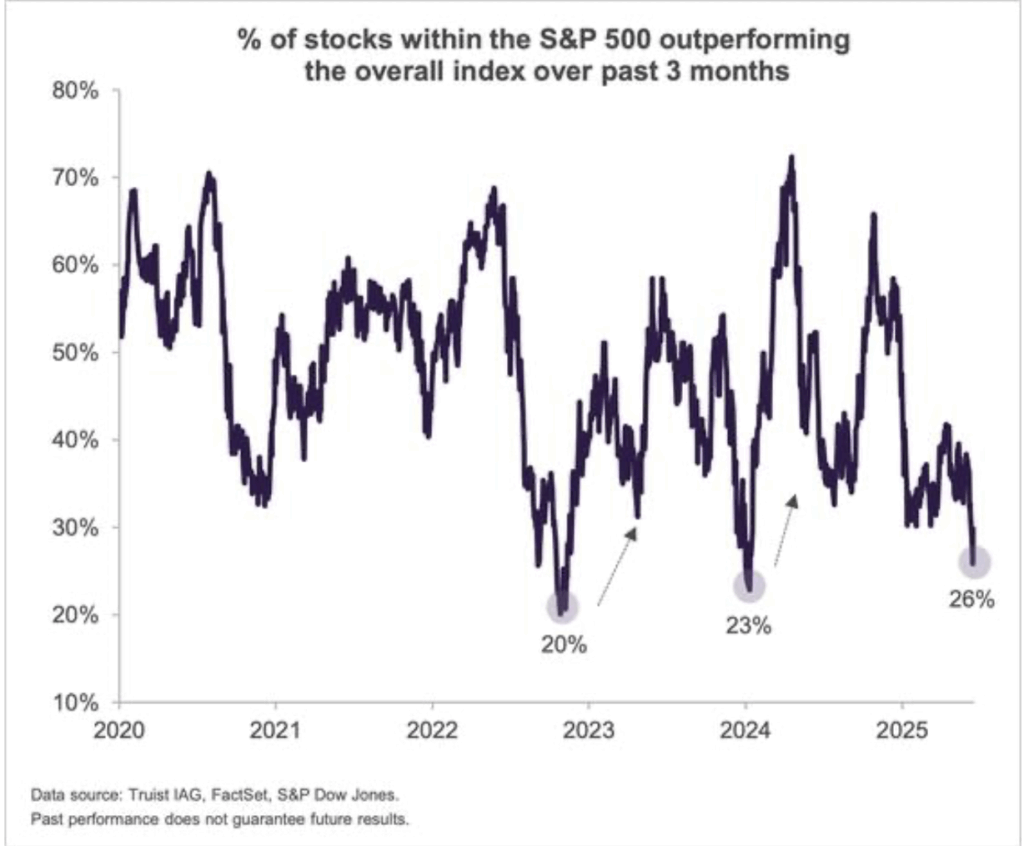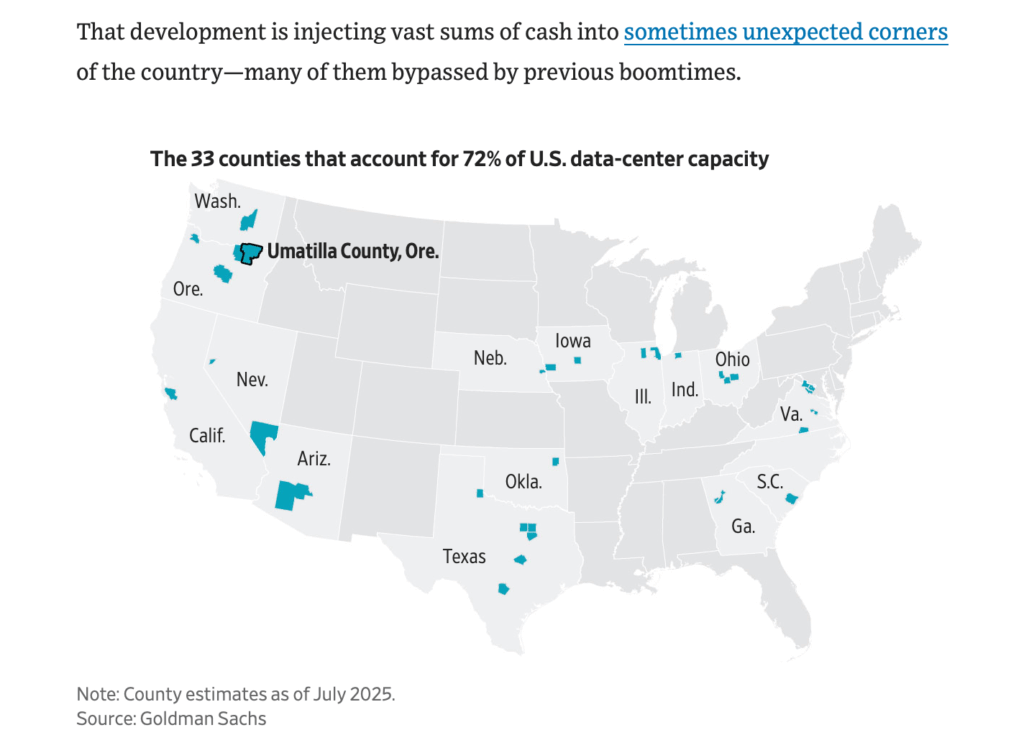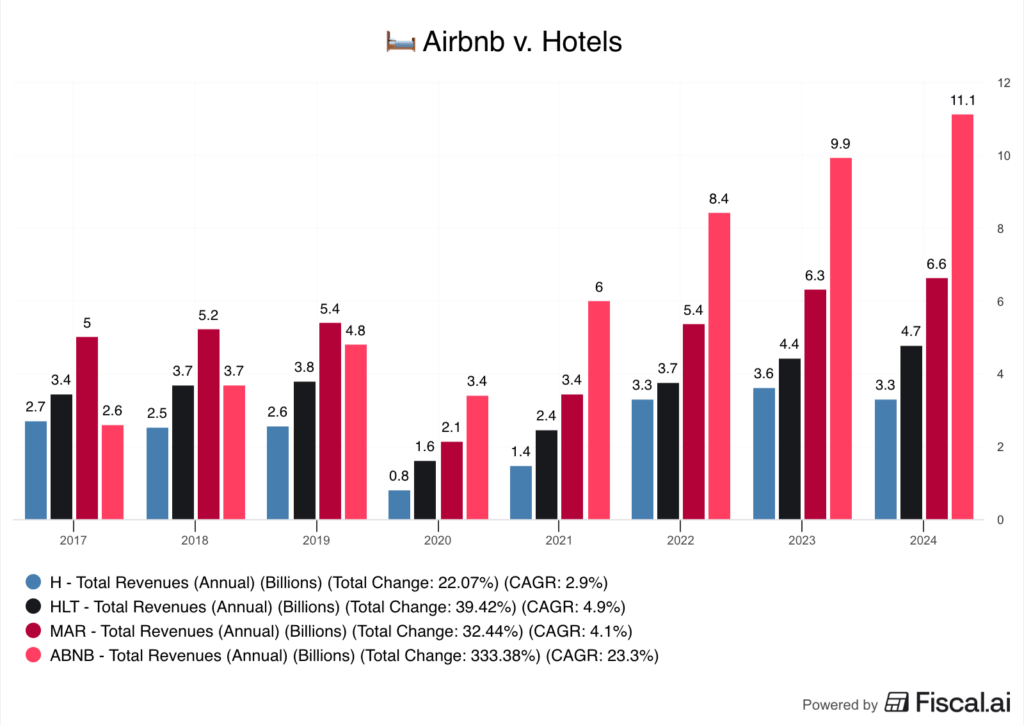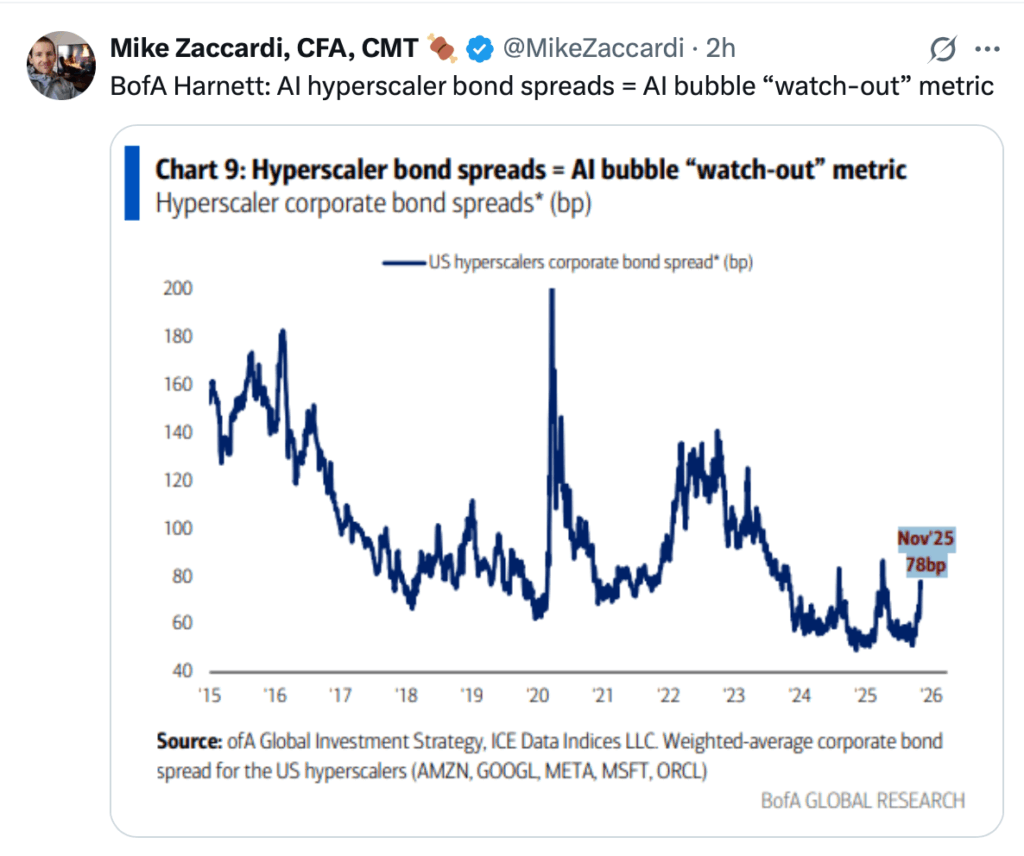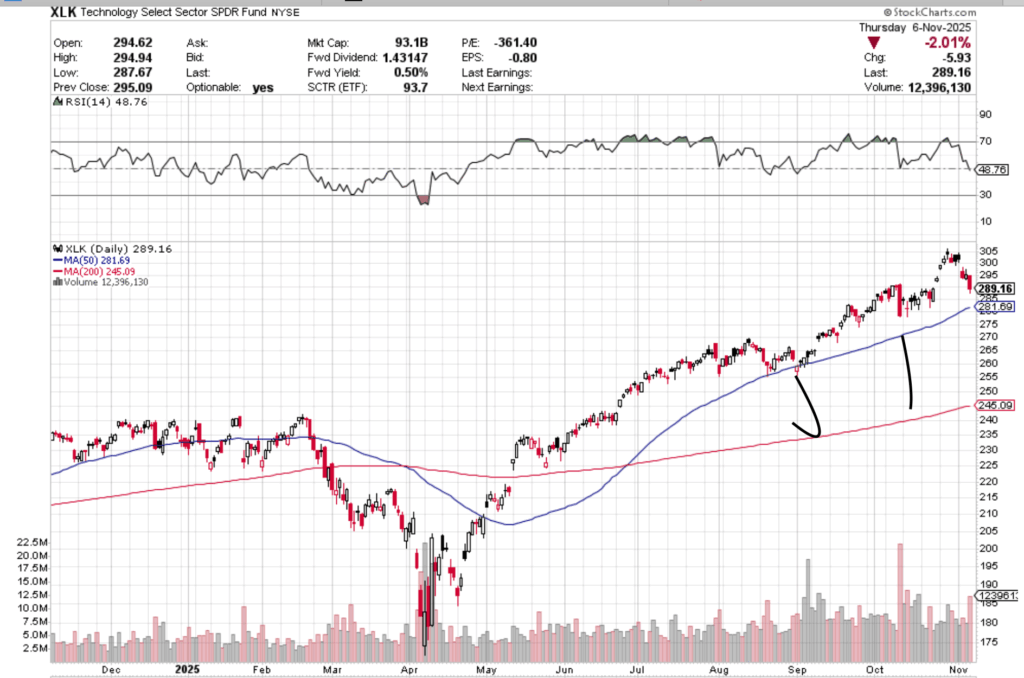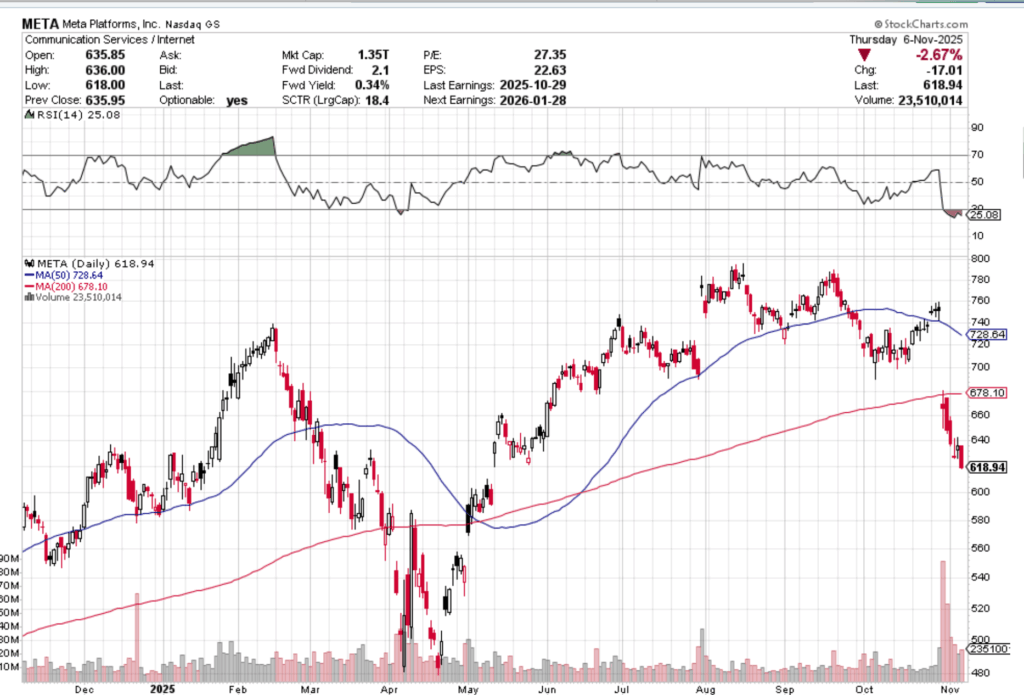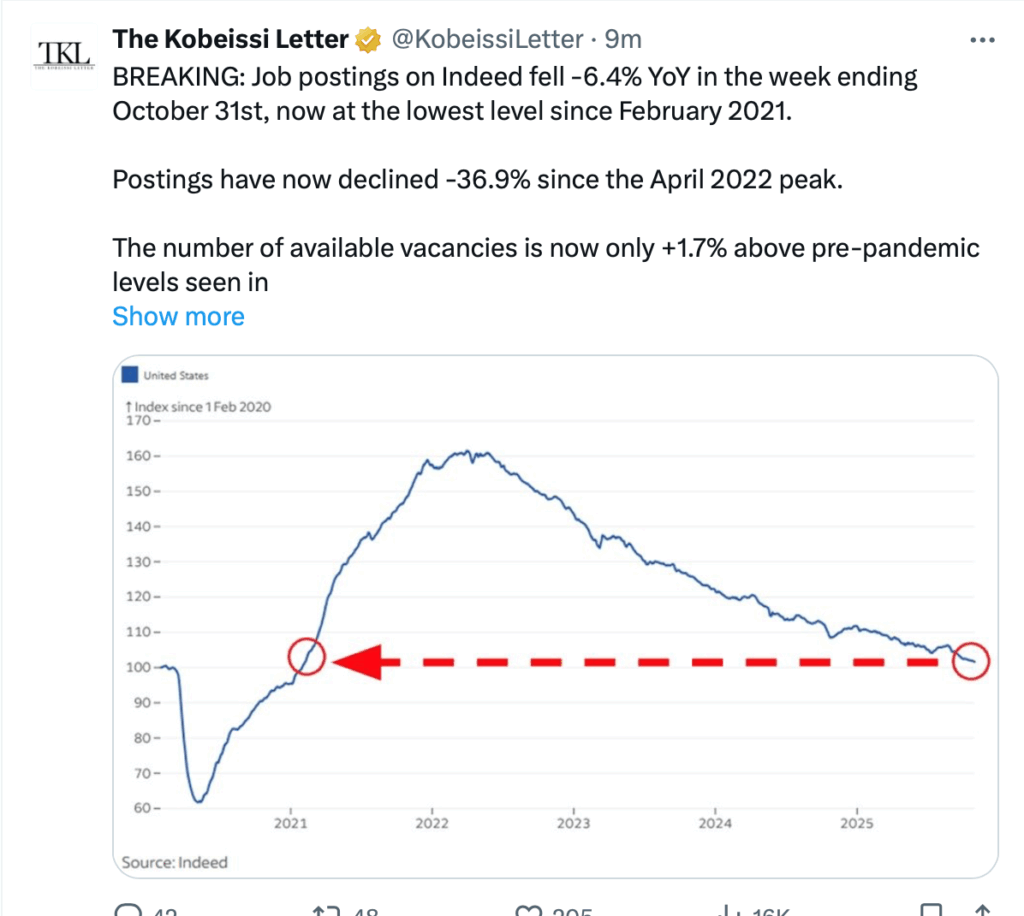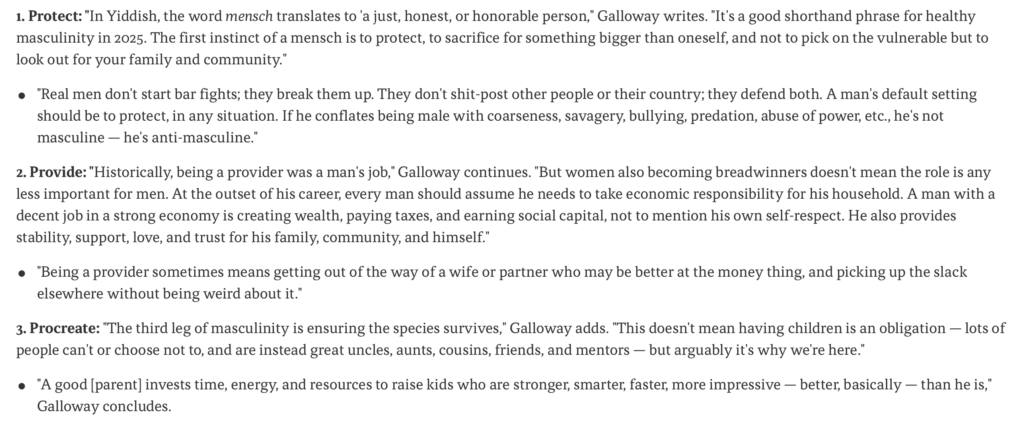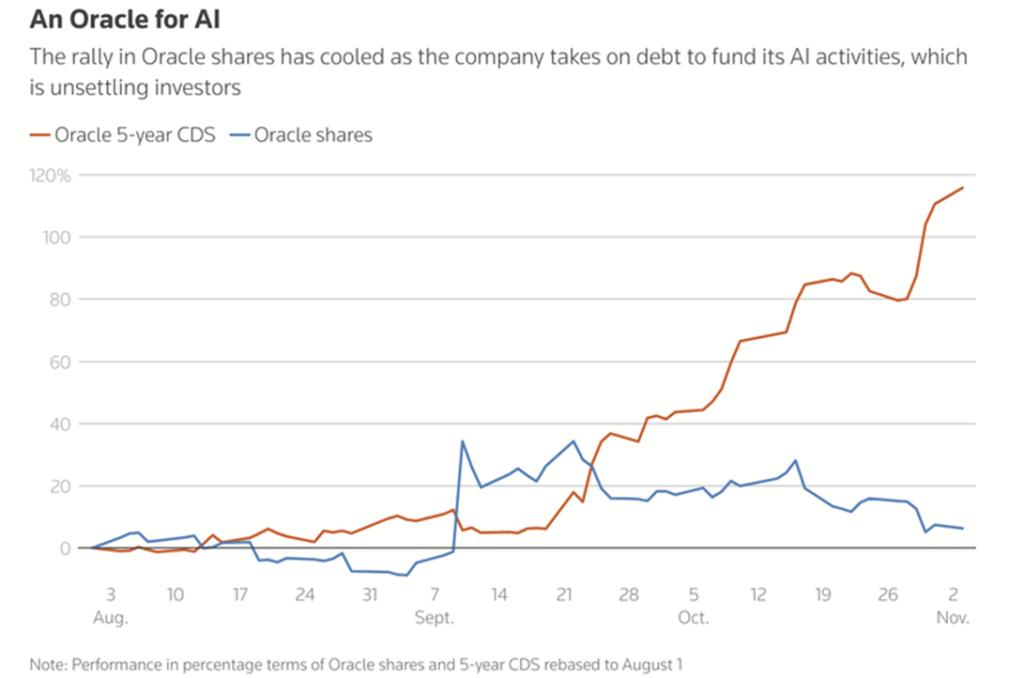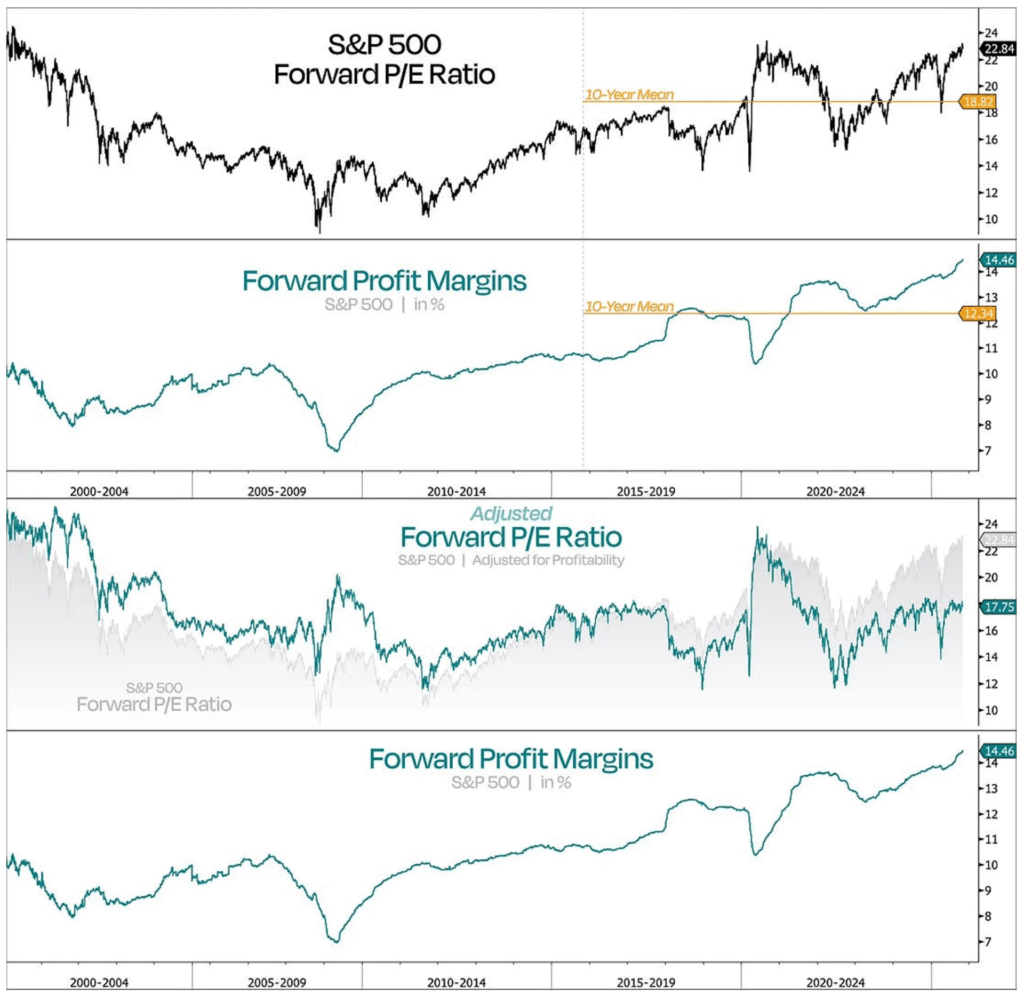1. Artificial Intelligence Index

The Irrelevant Investor
2. Bitmine -75% from Highs…Goal was to Acquire 5% of Ethereum

StockCharts
3. XRT S&P Retail ETF Holds 200-Day

StockCharts
4. Aerospace and Defense Stocks Above 50-Day Moving Average for 3rd Longest Streak Ever
Bespoke Investment Group With the successful test of the 50-DMA, the Aerospace and Defense industry has closed above its 50-DMA for 139 trading days. That’s the longest streak since a record 151 trading days in 2017 and ranks as the third-longest in the last 30 years.

Bespoke
5. It’s All About the Power….Data Centers Need Electricity


Semafor
6. LLY Break-Out New All Time Highs

StockCharts
7. Five Takeaways From Warren Buffett Thanksgiving Letter
Business Insider Here are five main takeaways from the letter, paired with key quotes:
1. He’s not planning to sell a bunch of stock right now
Buffett said he plans to keep a “significant” amount of his class-A shares. That is, until shareholders reach the same level of comfort with newly appointed Greg Abel as they had with Buffett and his long-time partner, Charlie Munger.
Key quote: “That level of confidence shouldn’t take long. My children are already 100% behind Greg as are the Berkshire directors.”
2. He’s accelerating donations
Buffett said he’ll donate more than $1.3 billion of Berkshire Hathaway shares to four family foundations: his late wife’s, and one for each of his three children.
Key quote: “The acceleration of my lifetime gifts to my children’s foundations in no way reflects any change in my views about Berkshire’s prospects.”
3. He wants Berkshire CEOs to be humble — and in it for the long haul
Buffett said he hopes that, “with a little luck,” Berkshire will only have five or six CEOs over the next century.
Key quote: “It should particularly avoid those whose goal is to retire at 65, to become look-at-me rich, or to initiate a dynasty.”
4. He thinks pay transparency efforts have backfired
Buffett said that reforms aimed at pay transparency actually sought to “embarrass” CEOs, but instead made them more competitive.
Key quote: “The new rules produced envy, not moderation.”
5. He says investors should expect big stock drawdowns — and be patient for rebounds
Buffett noted that Berkshire stock has fallen 50% or more on three separate occasions in its 60 years under his leadership — and has always come back eventually.
Key quote: “Don’t despair; America will come back and so will Berkshire shares.”
8. Top 1% of Earners Now Have More Wealth than Middle Class America Combined
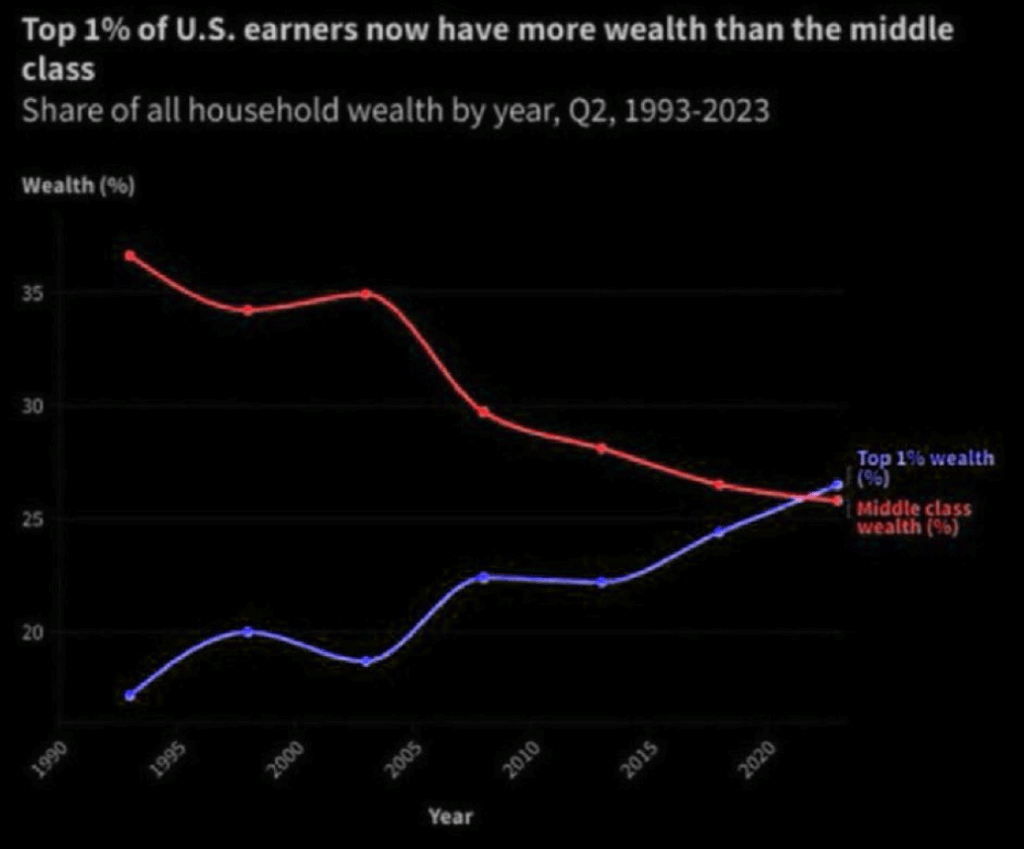
Zach Goldberg Jefferies
9. 50-Year Mortgage Math
A 50 year mortgage will not work to durably create any sort of affordability.
first off, it changes the monthly payment very little.
on a $500k home with 20% down, you pay $2,199/month on a 50 vs $2,480 on a 30.
$281/month savings. that’s simply not going to move the needle on affordability and when you look at the overall interest costs over the life of the loan, they rise 87%.
great for banks, bad for borrowers. https://boriquagato.substack.com/p/trumponomics-50-year-debt-and-a-worrying?publication_id=323914&post_id=178390014&isFreemail=true&r=8smvi&triedRedirect=true
10. Discover Yourself by Expanding Your Mental Map
Psychology Today Personal change is like expanding a map, except the territory is inside you- Nick Kabrel
Key points
- We apply the neuroscience of cognitive mapping to explain how learning and personal change might work.
- Getting stuck might mean repeatedly navigating within the confines of our narrow cognitive maps.
- Learning and personal change require expanding the map by exploring uncharted territories within.
Imagine you live in Europe in 1490. The map you see below (Figure 1) is what you think the world looks like; it’s all there is. A few years later, explorers discover a whole new continent, expanding the map of known territory. This fundamentally changes your understanding of the planet beneath your feet.
A new theory of psychological change, published by my colleague Jaan Aru and me in Perspectives on Psychological Science, proposes that internal transformations mirror this expansion of geographical maps, only the territory we navigate and expand lies within ourselves (Kabrel & Aru, 2025).
The core idea: Your mind as a map
To model how people change, we used psychotherapy as a prime example of how humans explore and transform their inner world. But the same process can describe learning in general, whether through therapy, education, coaching, consulting, or everyday life.
In short, the core idea is this: Your mind can be represented as a map or network of interconnected concepts, ideas, sensations, memories, beliefs, attitudes, and so on. Sometimes, this map may be too narrow, like Europeans’ conceptions of the world in 1490.
Most of the time, we think, feel, and act within familiar territories. Human development, whether it’s an emotional breakthrough in therapy, an insight in coaching, or a creative idea in business, requires us to go beyond the known map and expand it, thereby transforming what is known. Now, let me explain all this in detail.
Not just a metaphor
Back in the 1940s, researchers discovered that if you train a rat to run through a maze, its brain builds what they called a “cognitive map” of that space. In the hippocampus (the brain area crucial for memory and navigation), individual cells fire when the rat is in a specific place. As it moves, different cells fire in sequence. Together, these cells form a kind of internal map of the territory.
What’s remarkable is that the same neural system that allows a rat to navigate a maze, or you to find your way from home to work, also activates when we think about abstract concepts. When you move through a chain of thoughts, your hippocampal cells fire in similar sequential patterns. Thinking, in other words, is “mental navigation”: You’re traversing an internal territory of ideas, memories, and associations.
Modern network science allows us to make this more tangible. By analyzing large amounts of language use, scientists can visualize a prototype of someone’s “mental map” (Beaty & Kenett, 2023). For example, your family members are likely represented in your mind as conceptually closer to you than your colleagues, just as cities on a map cluster by region. (See below.)
Neuroscientists also discovered that if you engage in different cognitive tasks, like searching your memory, categorizing objects, or making decisions, your brain engages the hippocampal cognitive maps to guide you (Viganò et al., 2025). This means that the idea of the mind as a map is not merely a metaphor: Evidence increasingly suggests it reflects how information is actually stored, organized, and accessed in the brain.

Our cognitive maps are built on our experience. Most of the time, this is highly adaptive: It allows us to predict, learn, and respond effectively to familiar patterns in our environment. But sometimes, it can also backfire.
For instance, when facing a complex problem that demands creativity, we might get stuck in a loop, returning to the same familiar but ineffective solutions.
In therapy, a person who learned in childhood that “people are hostile” may continue to navigate within that same map, avoiding emotional openness long after the original context has changed.
In organizations, a leader might hold a rigid belief that “AI must be integrated immediately,” overlooking broader contextual or ethical challenges.
The key point is that we often become trapped within the borders of our existing cognitive maps. Metaphorically, it’s as if we keep walking the same corner of our internal landscape, never exploring the broader territory that lies beyond.
Here again, neuroscience helps explain why this happens. We can’t simply “decide” to think differently, because the neural pathways we use most often become the strongest. Every time a thought pattern activates, the same neurons fire together, and those connections strengthen. It’s like a beaten path through grass: the more often you walk it, the more defined it becomes, and the harder it is to take a new route.
Expanding the narrow cognitive map
Expanding your cognitive map is a challenging task, precisely because it requires you to step off those familiar mental trajectories. That’s why we often need other people—therapists, coaches, teachers, or consultants—to help us break through these limitations.
For example, in our paper, we conceptualize the therapist as a skilled navigator—someone who helps you leave the narrow confines of your existing map and chart new, previously unvisited territories within your own mind.
Think about it: The therapist asks questions. You follow your thoughts. You notice things you haven’t noticed before. The therapist points out patterns. You explore connections you’ve never explored. Gradually, you map new territory.
This isn’t just kitchen talk. It’s active navigation through your own neural space. Except, instead of following your habitual route A-B-C-D-E, the therapist helps redirect you to A-B-F-G-H – places you’ve never gone before. (See below.)

Explore
The world wasn’t smaller in 1490; people’s understanding of it was. The same holds for our minds. Our internal map has the potential to be broad, containing many possible neural states, yet in our lifetimes, we visit only a small fraction of them. Most of the time, we move along familiar paths, following patterns that feel safe and efficient.
As we tried to show with a new theory, expanding our cognitive maps requires curiosity, guidance, and the willingness to step off the beaten track, exploring routes the mind hasn’t traveled before.


